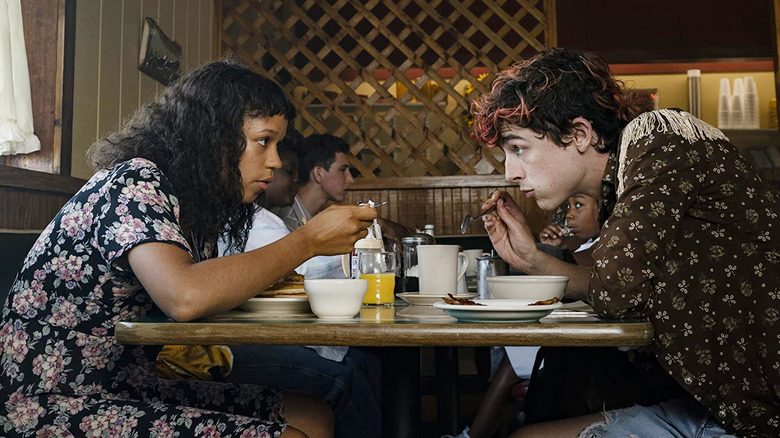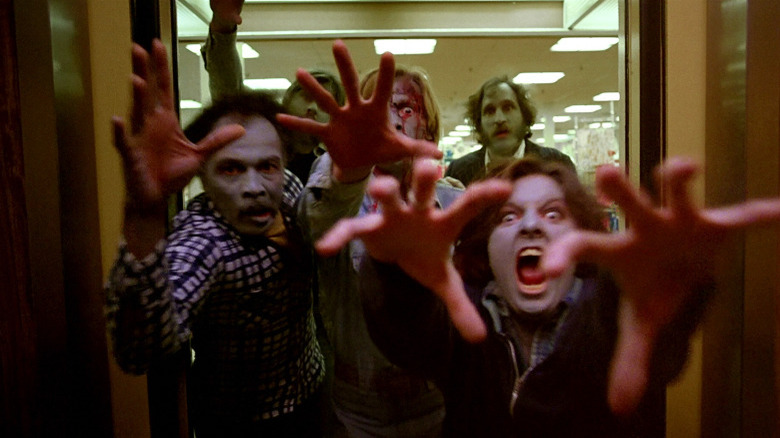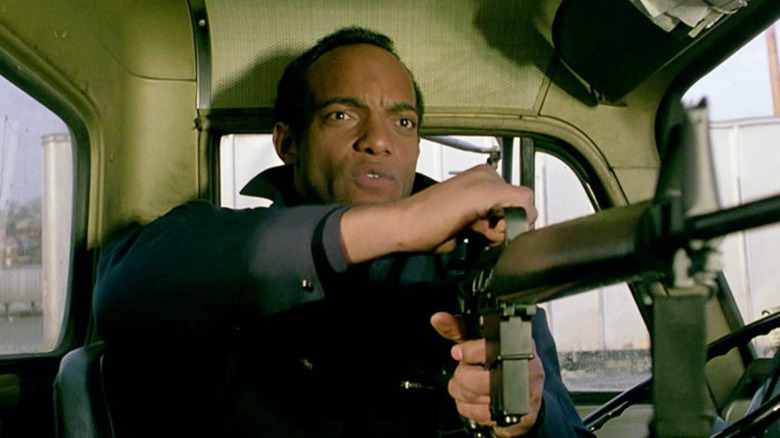Why Luca Guadagnino Thinks George A. Romero Was 'One Of The Greatest Directors'
Growing up in the blue collar city of Pittsburgh, George Romero came from working-class roots and always remained humble throughout his filmmaking career. As the creator of the modern zombie, Romero caused a ripple effect throughout cinema that is still being felt today with more socially conscious genre fare like "Get Out" and groundbreaking mainstream television like AMC's "The Walking Dead," which just ended its phenomenal run after 11 seasons. Having met Romero on several occasions, I can say he was always humble and kind, never letting his legendary director status get in the way of his independent roots and community-driven creativity. Romero would stay in the Pittsburgh area to make almost every film of his storied career, including "Night of the Living Dead," "Martin," "The Crazies," and the medieval biker mini-epic "Knightriders."
Even after Romero moved to Canada (where it was easier to make the films he wanted), his contemporaries and acolytes continued to sing his praises. For filmmakers like Guillermo del Toro, recognizing and championing Romero's contributions to the art of filmmaking became a mission of sorts. When Romero passed away in 2017, del Toro told Rolling Stone, "George was an iconoclast, an untamed mind and a liberal thinker who used horror to illuminate the darkness around us." Now, acclaimed director Luca Guadagnino has compared his new horror romance movie "Bones and All," starring Timothée Chalamet and Taylor Russell, to Romero's extensive zombie output, rightly pointing out that films like "Dawn of the Dead" added a much-needed sense of realism to the horror genre as a whole.
'One of the greatest directors'
Based on the book by Camille DeAngelis, "Bones and All" functions as a profound romance between two lost kids, Maren (Taylor Russell) and Lee (Timothée Chalamet), who find each other somewhere out in the badlands of the American countryside. Maren was born different, holding back an insatiable urge to eat human flesh for most of her teenage years. After running away from home, she discovers others like her, including Lee and other, more dangerous characters on the road. It's an underground movie about a cannibalistic subculture that director Luca Guadagnino approaches with care and sensitivity. The graphic scenes where Maren and Lee feed are filmed in a naturalistic way that show their affliction as a need instead of an inescapable curse.
If Guadagnino had never seen "Dawn of the Dead" or Romero's other films, "Bones and All" may have ended up looking very different. Both films are about survival under the most unlikely circumstances, a connection that Guadagnino is acutely aware of. "Romero never brought the fantastic into his world," the director told Total Film (via GamesRadar+). "He has a very matter-of-fact, practical outlook, given the premise that the dead are coming back to life and they're seeking fresh human flesh."
Over the years, Guadagnino has come to strongly feel that Romero's realistic, political approach gave way to a watered-down version of the zombie film where blood and guts became the central focus:
"[Romero] has not created rules other than dealing with how it would happen in reality, and that's why he's one of the greatest directors, and that's why his legacy has been trashed by what happened afterward. Because the fantastic, the surreal, the postmodernism of that became devoured."
Guadagnino's fable vs. Romero's parable
There are plenty of great zombie films that came after George Romero's holy trilogy, but the political underpinnings about race in "Night of the Living Dead" and the biting satire of American consumerism in "Dawn of the Dead" are seminal moments in the zombie subgenre that will never be matched again. Luca Guadagnino understands this, and comments like his help to secure Romero's legacy. "The political and cinematic qualities of the original movies stand the test of time, whereas the offspring of George Romero do not," Guadagnino claimed.
Romero's films work more as cautionary tales or parables, holding a mirror up to society so we can reflect on our humanity through the horror we tend to inflict on each other. Guadagnino and Guillermo del Toro's horror films, however, operate as earnest fables that use violence to test our limits and introduce us to uncanny creatures that help unlock our imagination. "In 'Red Riding Hood,' the wolf eats people," Guadagnino added. "Through the lens of the uncanny, we're being told to find a way to overcome the limits of ourselves. That's why it's important that we read our fables to our children."
The parables that Romero told over his career have had a lasting impact largely because of how realistic he made the outlandish seem. "Dawn of the Dead" felt like it could actually happen in our world. Conversely, the greatest fables are passed down generation to generation and remain in our collective consciousness because those stories use the fantasy realm to change our perception. "Bones and All" isn't teaching us anything, necessarily. But Guadagnino still wants audiences to take something away from his violent poem of a film. "To love monsters, and to love the monsters in them," he explained. "It's not about putting everything in order. Fables are not about restoring order. It is about transformation."
"Bones and All" is now playing in theaters.


